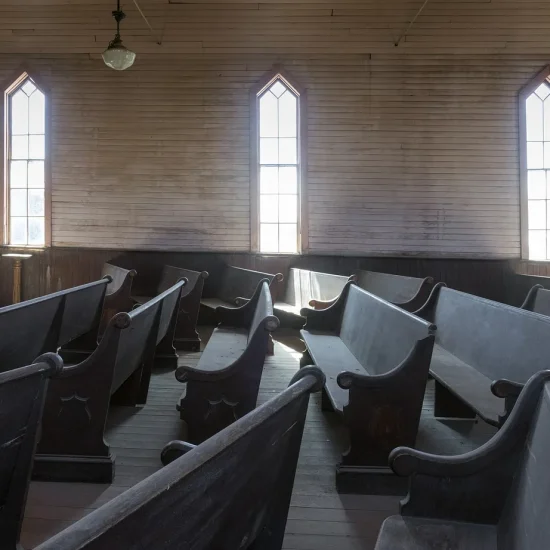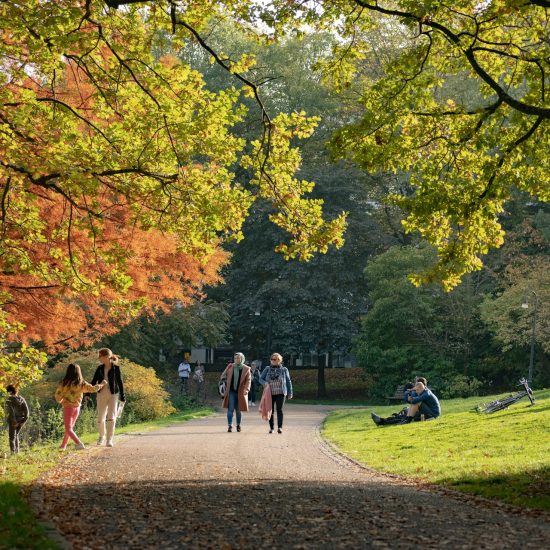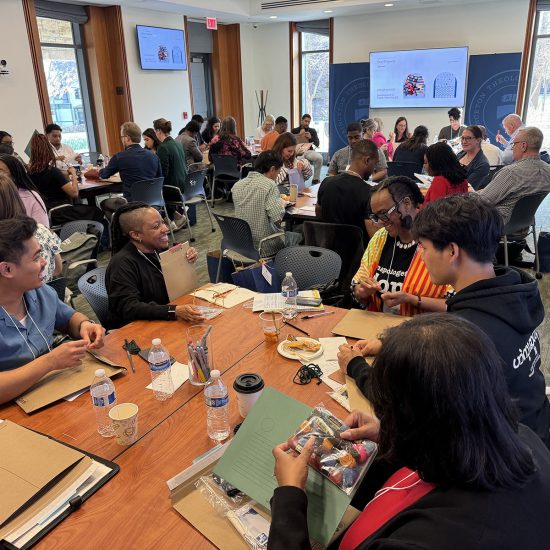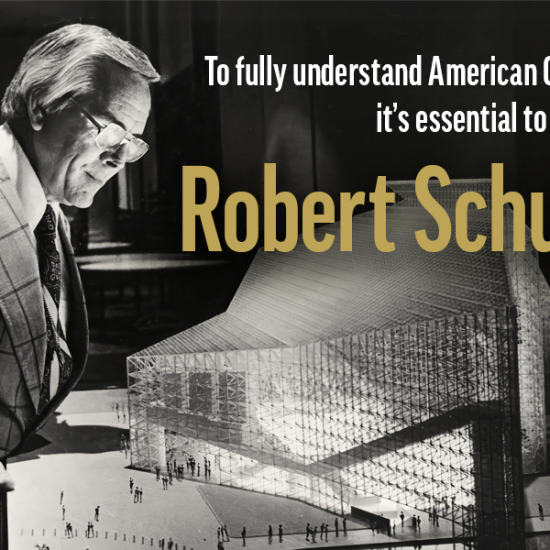KANNAPOLIS, N.C. (ABP) — Charles Cannon built First Baptist Church in Kannapolis, N.C., when Cannon Mills provided both engine and fuel for the aging textile town 27 miles north of Charlotte. He wanted a good church for his workers, so he had First Baptist constructed on the edge of the mill property.
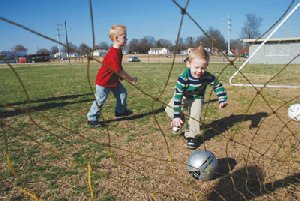
Aidan, left, and Dylan (in the green shirt) love soccer and the new church home they found with their family through participation in the soccer league offered by First Baptist Church in Kannapolis through local elementary schools.
|
First Baptist celebrated its centennial in 2008 and has enjoyed its current red brick, columned building for 75 years. It is imposing and regal, but because of the way Cannon provided the building, the church doesn’t own an inch of land outside the building’s footprint — not a single parking space.
The textile industry has fled North Carolina and in the past few years, Cannon’s massive mills were converted to Pillowtex, which later closed and erased 2,400 local jobs. Billionaire David Murdock bought whole blocks of Kannapolis and in their place is building a research facility of colonial red brick buildings. The buildings and the international workforce that is beginning to occupy them are changing the face of this small southern town.
Tom Cabaniss, with 14 years in the pulpit of First Baptist Church, wanted to change the public face of his church, too. The church owns 11 and a half acres of land a half mile away, on a main thoroughfare in town, and had architectural drawings in hand for a $20 million complex to be built in phases, including a new sanctuary.
Then, at a staff retreat, Cabaniss asked, “What if we became the place that people thought of when they thought of ministry in Kannapolis?”
That question began to drive deacon meetings, staff prayer time, small groups and committee meetings within the church. It also altered plans for a new facility and instead, prompted the church to ask local Christian community organizations what it should build for its ministry to the area’s homeless and hungry.
In January 2009 the church went through “Experiencing God,” a spiritual growth program, and gained a “pervasive, fresh sensitivity to be willing to shelve whatever we thought we’d come to the table with and come together around whatever God would show us,” said Haven Parrott, minister of Christian discipleship and art.
First Baptist has always sent money and people to distant locations, but now they asked, “What if our mission field is Midway?” — those 11 and a half acres of sports fields and bare ground the church bought in 2002. “What if God actually wanted us to ‘burst through the bricks’ and make a difference here?” Parrott said.
When they considered ways to engage the community, everything seemed to start with Midway. The fields are surrounded by an easy access highway and a transitional neighborhood of modest houses once occupied by mill workers.
The church bought the land strictly on the basis of opportunity and potential. They paid it off quickly and gathered their plans to build. Then the economy hit a brick wall and the answer to their prayers was, “Wait.”
But “wait” didn’t mean “stand still” and the compelling question of ministry continued to motivate the church. For several years they had sponsored a soccer league that developed into a comfortable, friendly, weekly get together at the soccer field for about 85 Christian children and their families.
“That’s not outreach,” said Cabaniss. When the soccer coordinator had to drop out the church went in a different direction. It passed out flyers in each elementary school — all of which are Title 1 schools with a high percentage of poor students. The church “charged” a modest $5 (though it frequently set aside even that “dignity fee”) and 200 rambunctious, excited children flooded the field.
About three dozen church members volunteered as coaches and organizers, and other members came as cheerleaders.
Long after the church had decided to scholarship the entire program if necessary the Cannon Foundation responded with a $15,000 grant because the six-week effort would contribute to healthy habits of children and their families.
Participants 4 years old through fourth grade had one practice during the week and games on Saturdays. Families received information about the church and church members led devotions for the families. Coaches led devotions for their teams.
A season-ending carnival followed a recognition service in the sanctuary. Parrott said families had to attend the service to participate in the carnival, but the purpose was to break the barrier of intimidation that often keeps strangers from braving entry into a large, imposing, traditional church building.
“What we do is relational,” Parrott said. “We didn’t go into it thinking we’re doing this to get new members. We did it to be a presence in that community, whatever that meant, but we knew it meant getting in their back yard.”
If things progress on their current track, future soccer teams will play in the shadow of an 11,000-sq-ft, $1.6 million ministries building that will serve the homeless and hungry in Kannapolis. It will be the simple, functional building First Baptist Church builds for others rather than the new complex for itself it was considering. It will have a basketball court, kitchen, a sleeping area and space for feeding and a clothes closet.
First Baptist will hold Bible school there and have activities, “but it is such a far cry from the really pretty building we were going to build,” Parrott said. “We will build it for others, not for ourselves.”
Norman Jameson is reporting for ABP on an interim basis, and also is a contributing writer for the Religious Herald. Based in Raleigh, N.C., he is former editor of the North Carolina Biblical Recorder.

